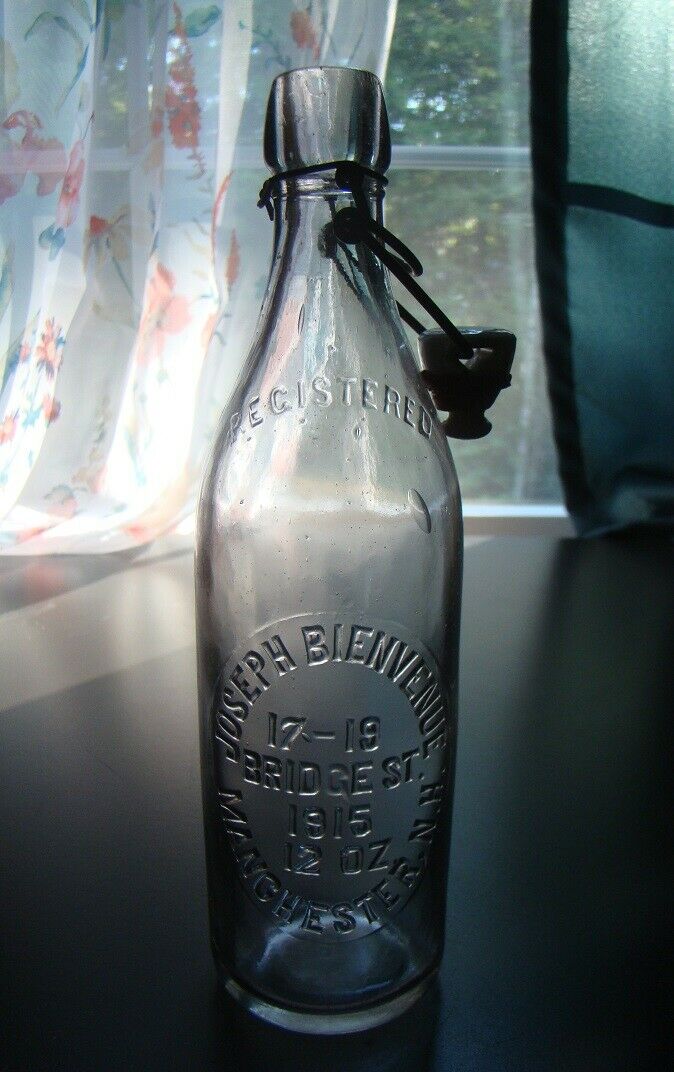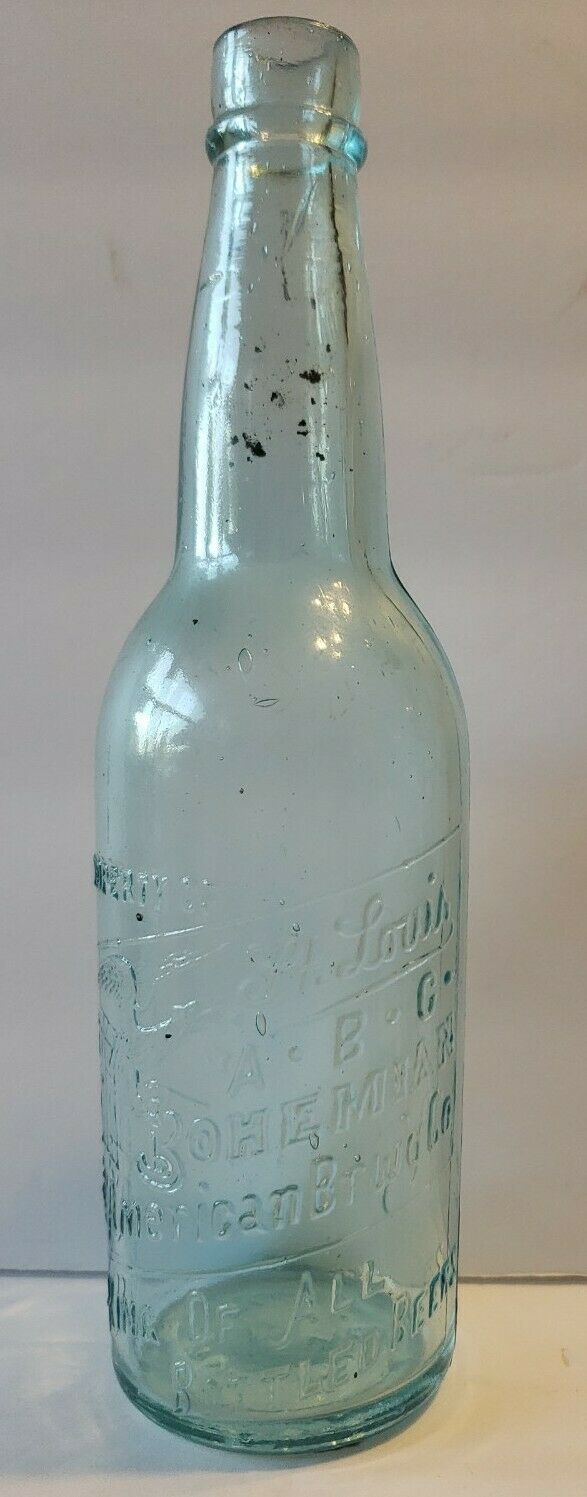-40%
Rare Early Amber Grasser & Brand Quart Blob Top Beer Bottle Toledo Ohio c1877-89
$ 13.19
- Description
- Size Guide
Description
This is an early bimal quart blob top from a Toledo, Ohio.It dates from 1877 to 1889.
It is amber and stands 11-3/4 inches tall.
There are no cracks or chips. Some scratches make it look as if it were dug, yet bottle is oddly clean. Crisp embossing. Some whittling. Additional cleaning always suggested. See pics.
It's is embossed on the front with the following:
GRASSER & BRAND
TOLEDO, O.
The reverse shows where what was originally embossed there was peened out. It's a very interesting accent to the bottle. Maybe with some patience someone can figure out what it originally was.
The Grasser & Brand Company name was used from 1877 to 1904.
When combined with the glasshouse used this bottle dates from 1877 to 1889.
The base is embossed with A&DHC
A.&D.H. Chambers (ca. 1852-1889)
Alexander and David H. Chambers started their new business in Pittsburgh,Pennsylvania, about 1852.
Although McKearin & Wilsonclaimed that the firm built a new plant, Roller suggested that the brothers may have builtan additional plant because it was at the same address as the older factory. It is also possible, of
course, that the brothers razed the older plant and built completely anew.
Hawkinsnoted specifically that this was the same plant used by both preceding firms.
By 1857, thefactory operated three furnaces with 25 pots to make window glass, vials, and bottles in both
black and green glass. David Chambers died while visiting Chicago in 1862, leaving his brother,
Alexander, as sole proprietor.
The Chambers firm published a catalog in October 1866. Along with window glass, theplant made patent medicine vials, castor oil bottles, ink bottles, prescription ware, fancy colognebottles, liquor flasks, Chambers’ Improved Fruit Jars, Lyman’s Patent Fruit Jars, mineral waterand beer bottles.
The factory called its amber line “ruby colored glass” and manufacturedporter, ale, wine, brandy, sarsaparilla, schnapp, hock wine and claret bottles in that color. The
plant’s flint (colorless) line included apothecaries’ shop furniture, glass funnels, graduatedmeasures, syringes, vials, and ball-neck panel bottles. The plant also made flint lamp chimneys.
By 1866, Robert Riddle had become a partner, although the name of the firm remainedthe same. Although the date is currently unknown, the company was probably one of the earlybeer bottle makers in business after the 1872 pioneering of Pasteurization by the Anheuser Busch Co.
By 1876, the firm operated a green glass works at 6th & Birmingham, using twofurnaces and a total of 12 pots to make bottles. If not earlier, the brothers certainly made beer bottles by 1878, alongwith window glass, “phials” (vials), and wine bottles.
James A. Chambers (Alexander’s son) and Hartley Howard had joined the proprietors’
list by 1872.
The price list that year included the Improved Jar (with offset necks for corks), theUnion Fruit Jar, and grooved-ring wax sealers. When the elder Chambers died on March 28,1875, his son, James, and Harry B. Patton apparently gained complete control of the firm.
In 1881, the plant
made vials and bottles at two furnaces with 20 pots.
A major flood of the Monongahela River completely submerged the entire compound in1884. The plants were rebuilt by September 1885 and consisted of five factories, with fivefurnaces and 41 pots. The firm remained open until early 1889, when it was succeeded by theChambers & McKee Glass Co.
Thanks for looking!
Always happy to combine shipping on multiple listings!!




















